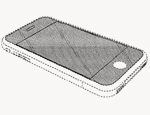Design Patents Are Valuable
It seems that your Invention Guru must be obsessed with Apple and their on-going patent litigation in venues around the world. Well, I am obsessed because what happens has a direct impact on the worth of patents. And without patents, innovation crashes to a halt.
The first Design Patent was issued in 1842 to inventor George Bruce for a particular typeface. In the past 170 years, more than 600,000 Design Patents have been issued, but it took until August 24, 2012 for them to achieve the value that they deserve.
 An interesting observation of Apple’s recent jury verdict over Samsung, is that three of the four contested Design Patents went in Apple’s favor. Many inventors, business people and even patent practitioners felt that Design Patents had little value; however, when professionally filed for the right invention, Design Patents have great value.
An interesting observation of Apple’s recent jury verdict over Samsung, is that three of the four contested Design Patents went in Apple’s favor. Many inventors, business people and even patent practitioners felt that Design Patents had little value; however, when professionally filed for the right invention, Design Patents have great value.
It has been widely reported that a typical Smartphone can be related in someway to 250 or more patents. All Smartphones make phone calls, text message, surf the net, send emails along with a million other things. No one person or company can be singled out as the sole inventor. There are advances and differences between products that must be protected from blatant copying.
The improvement and differences that move technology another step down the road must be protected or there would be no incentive, no profit, for working hard. Profit is not a dirty word. Keep in mind that without a profit incentive, there would soon be no jobs let alone advancements to make our lives richer.
Design Patents protect the industrial and ornamental shape and appearance of a product. These attributes are the important difference that determines the selection of one product from another. It can be argued that it is the same thing we do when we select our wife, husband, or significant other. And it is what a federal jury in San Jose, California did in part when they ruled that Samsung stole the feel and ease of use from Apple. Design Patents were proven in a court of law to be valuable.
Athletic footwear from Nike, Adidas and their competitors is another example of the value of Design Patents. The uppers, protected by a Design Patent, are usually what attract a buyer to the shoe. The tread design often requires a separate Design Patent. A Utility Patent covers the internal construction that would include the arch support, the cushioning properties, and just about everything you don’t see.
In recent years, courts have mostly ruled in favor of Design Patents by citing the so-called “ordinary observer” test. The “ordinary observer” standard applies not only with respect to Design Patent infringement, but also in determining patent validity. It seems evident that a pro-Design Patent environment exists as evidenced with the Apple and other recent rulings. An inventor having both a Utility and a Design Patent issued on their invention has tremendous flexibility. The inventor, as seen with Apple’s victory over Samsung, has the opportunity to prevail in an infringement suit with a Design Patent claim even if the Utility Patent claims fail.








